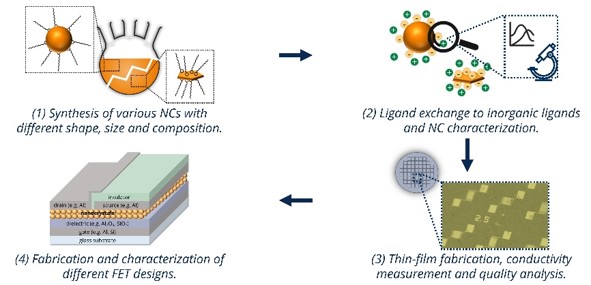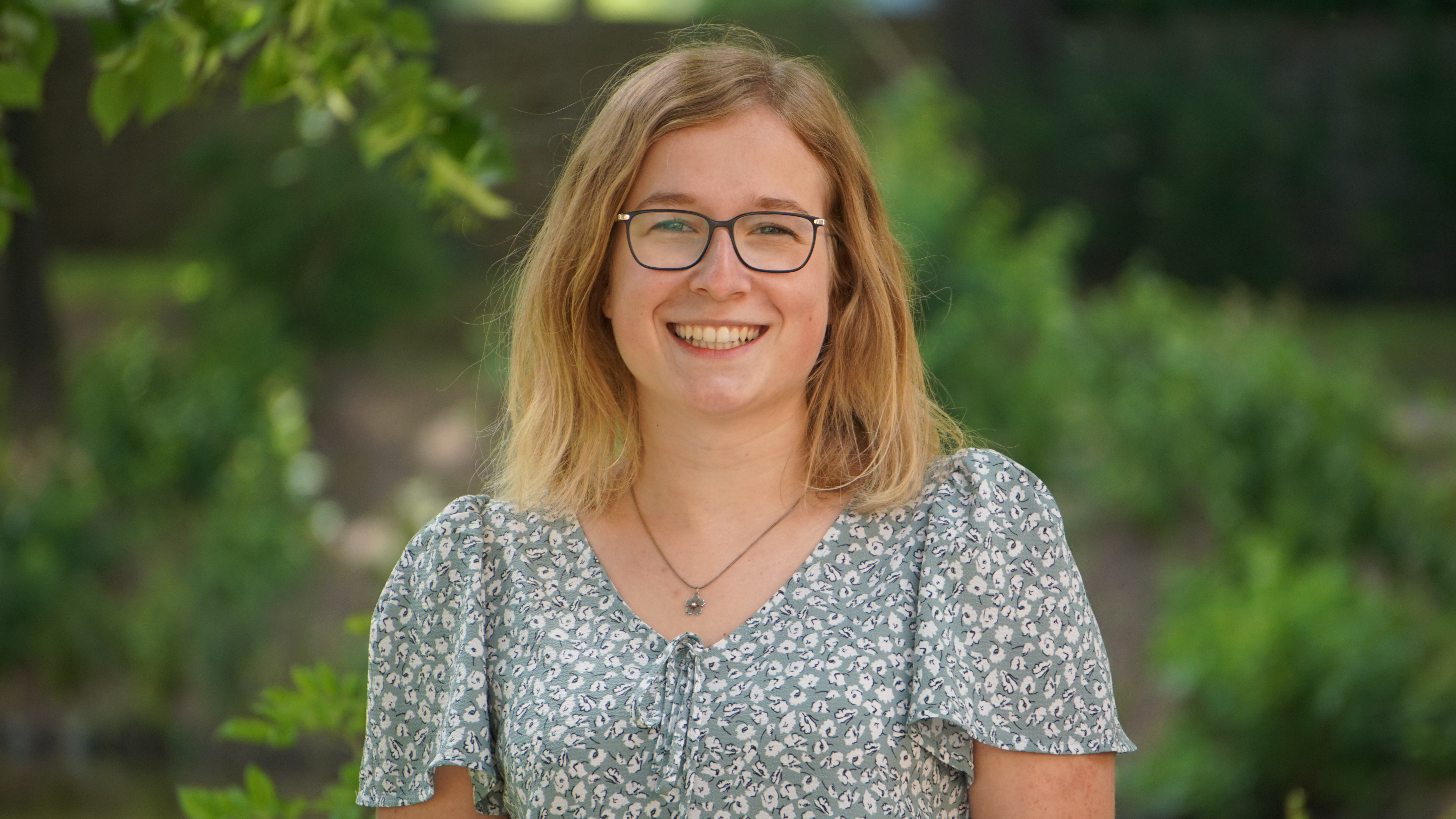Doctoral Researchers
A2: Nadia Günther (nee Metzkow)
|
E-Mail: nadia.guenther@tu-dresden.de After my Master's degree in Chemistry, I was looking for a PhD in the field of physical chemistry of nanomaterials with an application-oriented and multifaceted character. The RTG offered me this opportunity, to step out of my own research bubble and to work in an interdisciplinary and international environment. My project in particular, is about the use of semiconducting nanoparticles for novel transistor structures, that are powerful, flexible and tunable. |
|
Supervisors: Alexander Eychmüller, Karl Leo

Smartphones, computers, televisions, radios, power chargers - transistors can be found in almost every electrical device. Nowadays, such electronic components are expected to become smaller, more flexible, and more powerful. However, a high-performance, flexible, thin-film transistor technology is still missing.
Semiconductor nanocrystals (NCs) have the potential to achieve a breakthrough in transistor performance, as they overcome the intrinsic low carrier mobility of organic semiconductors. It is possible to precisely control the physical and electronic properties of NCs via parameters such as size, shape and composition. Using them in vertical transistor structures with their ultrashort channels is promising, as studies with CdSe NCs have shown recently.[doi.org/10.1021/acs.jpclett.9b01649]
In this work, we strive to use different NCs for transistors, which allow to easily realize high-performance devices without nanostructuring. Therefore, NCs like AgInS2 or ZnTe are synthesized to replace the widely studied but more toxic Cd-containing materials. Commonly, the as-synthesized NCs are capped with bulky insulating hydrocarbon-containing ligands which have to be removed in an additional thermal or chemical step. However, this postsynthetic treatment often results in the formation of defects or the removal doesn’t work completely. To avoid the necessity of such a step and to improve the electronic communication, the modification with inorganic ligands is the second focus of this work. The materials are then characterized in terms of their film-forming properties and electronic parameters and finally used for fabricating different types of transistors.
| 10/2018 – 03/2022 |
Master of Science in chemistryTechnische Universität Dresden
|
| 05/2021 – 11/2021 |
Internship for the Master’s thesis projectNorthwestern University (Evanston, USA)
|
| 11/2018 – 04/2019 |
ERASMUS semester in chemical engineeringÉcole National Supérieure de Chimie de Rennes (France) |
| 10/2015 – 09/2018 |
Bachelor of Science in chemistryTechnische Universität Dresden
|
Decker, H., Metzkow, N., Lesnyak, V.,
Plasmon-Enhanced Fluorescence of NIR-Emitting CdxHg1-xTe Quantum Dots by Ag Nanoprisms,
Part. Part. Syst. Charact. 2024, 2400120. https://doi.org/10.1002/ppsc.202400120
Jia, J., Metzkow, N., Park, S.-M., Leo Wu, Y., Sample, A. D., Diloknawarit, B., Jung, I., Odom, T. W.,
Spike Growth on Patterned Gold Nanoparticle Scaffolds
Nano Letters 2023, 23 (23), 11260-11265. https://doi.org/10.1021/acs.nanolett.3c03778
Metzkow, N., Klemmed, B., Georgi, M., Hübner, R., Eychmüller, A.,
Photoluminescence Properties of Lanthanide-Doped Alumina and YAG Aerogels
The Journal of Physical Chemistry C 2023 127 (34), 16995-17001. https//doi.org/10.1021/acs.jpcc.3c05011





